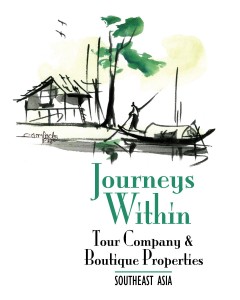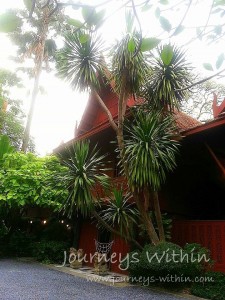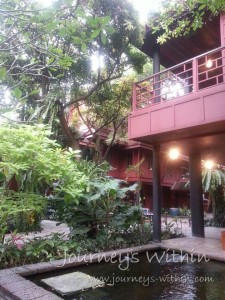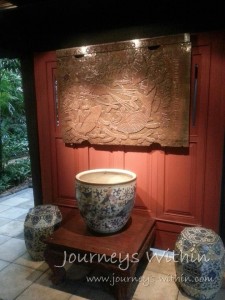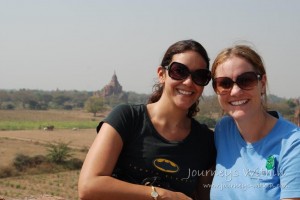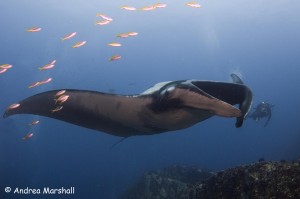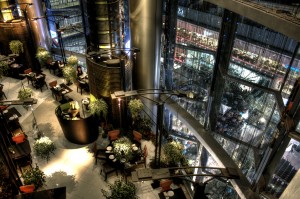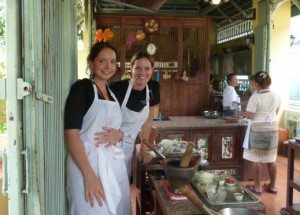Used to planning the perfect trip for others, tour consultant April shares her experience planning a trip that both she and her husband will love…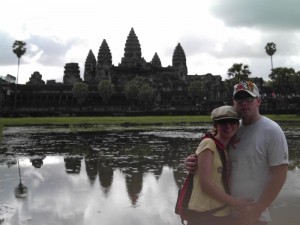
As I’m getting ready to leave for my own South East Asian adventure in less than two weeks I thought it would be fitting to share with our guests how a Journeys Within tour consultant plans their own vacation.
In planning my own trip I was reminded of how special my job is; I have the responsibility to make sure each itinerary fits our guests wants and needs to create a once-in-lifetime experience.
This getaway is quite special to me. It will be my first time visiting Myanmar (Burma) and as an added bonus my husband will be joining me, while my kids will be staying at home. As parents of younger kids we have taken them with us in the past, or I have gone alone but this year my husband and I decided to have a special trip, just the two of us, and I’m really excited about it!
In planning this special trip I had to think beyond what I wanted to visit and check out for work, and instead really wanted to design a trip that my husband and I would both love.
I often ask our guests “what are your travel interests?” Answers inevitably vary and it is my job to make sure everyone is happy. In planning this trip, I had to take into account the separate travel interests of my partner and I.
While I could visit about 20 destinations and travel non-stop, my husband can not. Chris would much prefer to head to one or two places and explore them at a very casual pace. As that won’t work for me — I do need to inspect some properties for work on this trip — I had to find a way to slow the pace for him and fit in what I needed to for work.
I wanted to mix in culture, relaxation, visiting with our local guides, seeing some of Thailand (as I love Thailand and thought it would be nice to fit it into our vacation) and some fishing — my husband really loves to fish. I also wanted to hit some sporting events as both my husband and I love to explore culture through local sports.
The first draft of the trip was entirely designed to fit what I needed to inspect on the ground, but it just didn’t embody a vacation my husband would love. I stepped a bit back from what I needed to do and just wrote a trip that I wanted to do. It took the blending of two completely different itineraries, but in the end I really think I put together a trip that is perfect for both of us.
In letting go of some of the things I thought I needed to see, my overall experience will be better. It is, after all, my job as a tour consultant to use my knowledge to design the right trip for our guests, not just a trip that checks off everything on a to-do list.
I’ve copied down my itinerary below so that you can see what I’ve planned for me and my loved one.
*Note, the hotels were chosen based on properties which I’d like to inspect for possibly booking for our guests. Some we know and some are new to us. Just because we are staying there doesn’t necessarily mean I recommend the hotel. I will follow up with hotel reviews after my trip. I’ll also be following up on my return with tour and location blogs.
I’ll even try to get in another blog before I leave about my packing list and my Pinterest board of restaurants to try and shops to visit – I know that if it were your vacation, you’d probably have a list of these important things too!
The Itinerary
01 Apr 13 Bangkok: Arrival
Arrive on your flight – Korean Air arriving at 22:10.
Arrive in Bangkok where you will be met by your guide and transferred to your hotel.
Meals Included: None
Overnight at: Siam Kempinski
02 Apr 13 Bangkok: Bangkok’s Culinary Delights
This morning head to Lumphini Park where you can see the locals do their daily exercise, whether it’s running, cycling or the mesmerizing art of Tai Chi. Take a stroll through the park to where the local food stalls are set up for breakfast and try some delicious congee along with local tea or coffee. Continue on down to Silom Road and explore the Lalai Sub morning market where you can see how they prepare the famous Thai dish “Pad Thai” along with other interesting local dishes which you can sample along the way.
Return to your hotel for a swim and a rest.
Your guide will then pick you up again later in the afternoon and take you to the Old Market in China Town. With an amazing mix of fresh food, Thai food and Chinese food, this is a hodgepodge of flavors and smells. As the sun sets, head to the Flower Market and Vegetable Market, where you can try the fruits and local snacks, followed by dinner with your guide at a local restaurant, before returning to your hotel.
Meals included: Breakfast, Lunch, Dinner
Overnight at: Siam Kempinski
03 Apr 13 Yangon – Arrival and City Tour all day
You will be transferred to Bangkok Airport for your flight – Thai Air TG303 departing at 07:55 & arriving at 08:50.
Arrive in Yangon where you will be welcomed by your local tour guide and transferred to your hotel to drop off your luggage. After lunch enjoy a tour of the city center featuring the National Museum; Chaukhtatgyi, a colossal reclining Buddha; Karaweik Hall, a Royal Barge on the Royal Lake and Bogyoke (Scott) market with hundreds of stalls selling local souvenirs. End the day at the world famous Shwedagon Pagoda, one the most venerable places of worship in Myanmar. Enjoy all the gold and gems and watch as the giant golden dome lights up as the sun sets. Join the locals who come every night to make offerings before heading back to your hotel.
**Tonight, dinner with the guides.
Meals included: Breakfast, Lunch, Dinner
Overnight at Kandawgyi Palace Hotel – 1Double Deluxe Room
04 Apr 13 Yangon – Bagan
In the morning catch your flight – Air Mandalay 6T401 departing at 06:20 & arriving at 07:40 to the ancient city of Bagan where you will spend the day exploring the city. Visit Nyaung U Market, Shwezigon Pagoda (the prototype for later Myanmar Stupas), Kyansittha Umin, Wet-Kyi-Inn Gubyaukgyi Temple with its exquisite mural painting from the 13th Century, and Htilominlo Temple. After lunch visit a fascinating lacquer-ware workshop before continuing on to Manuha Temple, built by the exiled King Manuha, before stopping at Nanphaya, said to have been the residence of King Manuha. You will also visit Ananda Temple, an architectural masterpiece, as well as the Oakkyaung Monastery, which is decorated with multi-colored mural paintings. End the day with some breathtaking sunset views from the terraces of an ancient temple.
Meals included: Breakfast, Lunch, Dinner
Overnight at Aureum Bagan Hotel – 1Double Deluxe Room
05 Apr 13 Bagan: City Tour
Start with Lawkananda Pagoda on the river side; continue on to East and West Phet Leik with its clay plaques depicting Jataka scenes; then Thatbyinnyu Temple, the tallest in Bagan; Shwegugyi Temple; the Palace site and Tharaba Gate.
In the afternoon your tour includes Apeyadana Temple with its paintings of Mahayana; Nagayon Temple; the Dhamayangyi Temple, a massive Temple with some of the finest brickwork, and then finish the day at Mingalar Zedi where you can see the sunset over the Ayeyarwaddy River and enjoy an evening cruise on the river.
Meals included: Breakfast, Lunch, Dinner
Overnight at Aureum Bagan Hotel – 1Double Deluxe Room
06 Apr 13 Bagan – Inle Lake
Catch the morning flight to Heho – Air Mandalay 6T401 departing at 07:55 & arriving at 09:20. Where you will be met and then continue by car for about an 1hour (30km) to the famous Inle Lake, the residence of the Intha people who live their lives on the water. Take a boat to your hotel and spend a relaxing afternoon watching the world go by.
Meals included: Breakfast
Overnight at Pristine Lotus Hotel – 1Double Lotus Villa
07 Apr 13 Day on Inle Lake
Today you will have a full day on and around the lake. You will see the unique method locals use to row their boats, fishermen with their own style of fishing, floating farms and gardens and a handloom weaving cottage with its own showroom. You will visit Phaungdawoo Pagoda which houses the five most revered Buddha Images in the southern Shan States and Jumping Cat Monastery, called that after its trained jumping cats. Also make a stop at a family run business making cheroot by hand.
Meals included: Breakfast, Lunch, Dinner
Overnight at Pristine Lotus Hotel – 1Double Lotus Villa
08 Apr 13 Inle – Heho – Nagapali Bach
Transfer to the airport for your flight to Thandwe – Air Bagan W9141 departing at 09:15 & arriving at 10:15. Arrive in Thandwe and transfer to your hotel.
Meals included: Breakfast
Overnight at Amata Resort – 1Double Cabana Cottage
09 Apr 13 Nagapali Bach – Day at Leisure
Free all day at the bach.
Meals included: Breakfast
Overnight at Amata Resort – 1Double Cabana Cottage
10 Apr 13 Nagapali Bach – Fishing Excursion
Today you will head out on a private boat to fish with the locals. Head to Pearl Island for lunch and a rest before heading back to shore.
Meals included: Breakfast
Overnight at Amata Resort – 1Double Cabana Cottage
11 Apr 13 Nagapali Bach – Yangon
Your guide will meet you at your hotel for your private transfer to the airport, where you will arrive in time for your onward flight – Air Bagan W9310 departing at 13:05 & arriving at 13:55.
In the evening go to visit at the world famous Shwedagon Pagoda, one the most venerable places of worship in Myanmar.
Meals included: Breakfast
Overnight at The Governor’s Residence (Orient-Express) – 1Double Deluxe Garden
12 Apr 13 Bangkok: Arrival and Muay Thai Match
Your driver will meet you at your hotel for your private transfer to the airport, where you will arrive in time for your onward flight – Thai Air TG302 departing at 14:55 & arriving at 16:50.
Arrive in Bangkok where you will be met by your guide and transferred to your hotel.
You will be picked up from the hotel by car and taken to the stadium. There you will experience the extreme excitement of “The Art of Eight Limbs” – the Thai boxing competition which Thai people call “Muay Thai”. Known as the “The Art of Eight Limbs”, because hands, shins, elbows, and knees are all used as weapons. A practitioner of Muay Thai (“nak muay”) has the ability to execute strikes using eight “points of contact,” as opposed to “two points” (fists) in Western boxing and “four points” (fists, feet) used in the primarily sport-oriented forms of martial arts. Enjoy the various matches as well as the excitement of the locals cheering and betting on the match. When the fights are finished you will be transferred back to your hotel.
Meals included: Breakfast, Dinner
Overnight at: The Bhuthorn
13 Apr 13 Bangkok: Songkran and departure
Celebrate Songkran festival!
In the late evening, you will be transferred to Bangkok Airport for your flight – Korean Air departing at 01:45 (14 April).
Meals Included: None


